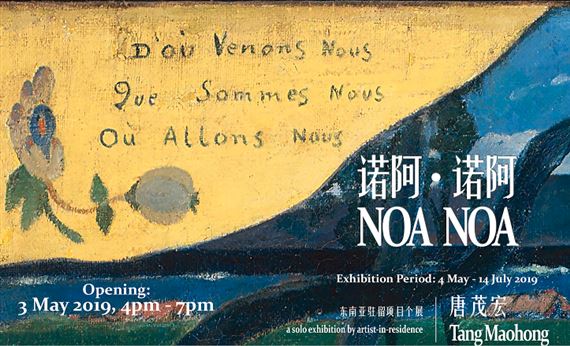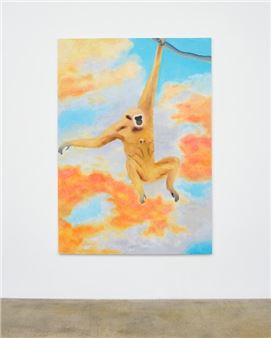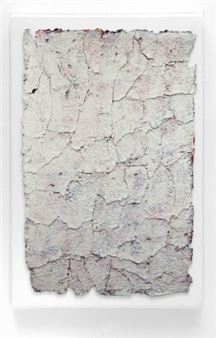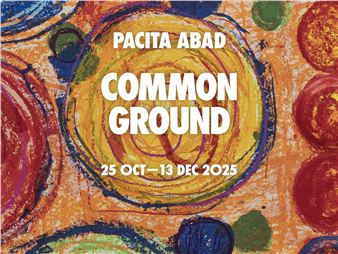Tang Maohong: Noa Noa
ShanghART Singapore is pleased to present a solo exhibition by our artist-in-residence, Tang Maohong. Taking inspiration from Paul GauguinвҖҷs famed but controversial residency in the Tahiti, the exhibition title borrows from GauguinвҖҷs travelogue Noa Noa: The Tahitian Journal. Such a reference reflects the artistвҖҷs initial impression of Southeast Asia as a place of lush greenery and azure skies, with big clouds and strong shadows; contrasting yet harmonious landscapes. Aside from being part of the artistвҖҷs childhood memory, the book brings forward an important principle in art practice a work is ultimately the product of stimulations from the artistвҖҷs environment. As such, the limited duration of a residency forces the artist to treat his journey as a catalyst; the foreign land thus becomes some sort of incubator for pre-existing ideas.
The long-lasting influence of Gauguin can be glimpsed from the travels and practices of Nanyang style artists. The tropical island of Bali stood in as their Tahiti as they projected onto it their fantasies of an exotic realm. The вҖҳother placeвҖҷ hence presents the artist with not just a shift in geographical location, but also, and perhaps more so, a flight of fantasy. Artists who painted foreign landscapes traditionally paid more attention to the novelty of their environment and overlooked the element of stereotypes and orientalist biases. TangвҖҷs residency projects consciously avoid overtly cultural-specific visuals and romantic ideals; adopting a disinterested eye towards the surface of things and focusing on the reality of identity in relation to larger political entities such as countries. As human migration becomes ever more prevalent, in addition to the fact that most parts of Southeast Asia have colonial histories, our understanding of self-identity becomes more complex than before. To address this complication, Tang again borrows from Gauguin the questions вҖңWhere do we come from? What are we? Where are we going?вҖқ as an entry point in his exploration of the concept of вҖңcountryвҖқ.

Recommended for you
ShanghART Singapore is pleased to present a solo exhibition by our artist-in-residence, Tang Maohong. Taking inspiration from Paul GauguinвҖҷs famed but controversial residency in the Tahiti, the exhibition title borrows from GauguinвҖҷs travelogue Noa Noa: The Tahitian Journal. Such a reference reflects the artistвҖҷs initial impression of Southeast Asia as a place of lush greenery and azure skies, with big clouds and strong shadows; contrasting yet harmonious landscapes. Aside from being part of the artistвҖҷs childhood memory, the book brings forward an important principle in art practice a work is ultimately the product of stimulations from the artistвҖҷs environment. As such, the limited duration of a residency forces the artist to treat his journey as a catalyst; the foreign land thus becomes some sort of incubator for pre-existing ideas.
The long-lasting influence of Gauguin can be glimpsed from the travels and practices of Nanyang style artists. The tropical island of Bali stood in as their Tahiti as they projected onto it their fantasies of an exotic realm. The вҖҳother placeвҖҷ hence presents the artist with not just a shift in geographical location, but also, and perhaps more so, a flight of fantasy. Artists who painted foreign landscapes traditionally paid more attention to the novelty of their environment and overlooked the element of stereotypes and orientalist biases. TangвҖҷs residency projects consciously avoid overtly cultural-specific visuals and romantic ideals; adopting a disinterested eye towards the surface of things and focusing on the reality of identity in relation to larger political entities such as countries. As human migration becomes ever more prevalent, in addition to the fact that most parts of Southeast Asia have colonial histories, our understanding of self-identity becomes more complex than before. To address this complication, Tang again borrows from Gauguin the questions вҖңWhere do we come from? What are we? Where are we going?вҖқ as an entry point in his exploration of the concept of вҖңcountryвҖқ.

 ARTISTS
ARTISTS













